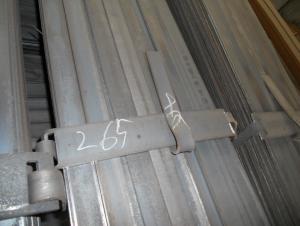Rebar, also known as reinforcing bar, is a critical component in the construction industry. It’s a steel bar with ridges that is used to reinforce concrete structures. It’s not just any steel bar, but a special type that is designed to work in harmony with concrete, providing strength and stability to buildings, bridges, and other structures. But why is rebar so important? And what are its uses? Let’s dive into the world of rebar and explore its significance and applications.
The Importance of Rebar
Rebar is essential for several reasons. First and foremost, it provides tensile strength to concrete. Concrete is great at compressing loads, but it’s not so good at stretching or bending. That’s where rebar comes in. The steel bar can handle the tension and stress that concrete can’t, making the structure more robust and durable.
Secondly, rebar helps prevent cracking. When concrete dries and cures, it can shrink and crack. The presence of rebar helps to control this shrinkage and reduce the risk of cracks forming. This is especially important in earthquake-prone areas, where structures need to be able to withstand a lot of movement and stress.
Types of Rebar
There are several types of rebar available for sale, each with its own specific uses and properties. Let’s take a look at some of the most common types:
– Straight Rebar: This is the most basic type of rebar. It’s straight and has no bends or curves. It’s used in simple structures where the concrete is not under a lot of stress.
– Hooked Rebar: As the name suggests, this type of rebar has hooks at the ends. These hooks help to anchor the rebar into the concrete, providing extra stability. It’s often used in areas where the concrete needs to be supported from below, such as in the foundation of a building.
– Threaded Rebar: This type of rebar has threads along its length. These threads can be used to connect multiple pieces of rebar together, creating a stronger and more stable structure. It’s often used in complex structures where multiple pieces of rebar need to be connected.
– Deformed Rebar: This is the most common type of rebar. It has ridges or deformations along its length, which help to bond the rebar to the concrete. This type of rebar is used in most concrete structures.
Uses of Rebar
Rebar is used in a wide range of applications, from residential buildings to large-scale infrastructure projects. Here are some of the most common uses of rebar:
– Buildings: Rebar is used in the construction of buildings to provide strength and stability. It’s used in the foundation, walls, and floors to ensure that the building can withstand the weight and stress of the structure above it.
– Bridges: Rebar is crucial in bridge construction. It’s used in the support beams and the deck to ensure that the bridge can handle the weight of traffic and other loads.
– Highways and Roads: Rebar is used in the construction of highways and roads to reinforce the concrete, ensuring that the road surface is durable and can handle the weight of vehicles.
– Parking Garages: Rebar is used in parking garages to reinforce the concrete slabs, ensuring that they can handle the weight of cars and other vehicles.
– Industrial Facilities: Rebar is used in the construction of industrial facilities to provide strength and stability to the structures. It’s used in the foundation, walls, and floors to ensure that the facility can withstand the weight and stress of the equipment and machinery.
How to Choose the Right Rebar
Choosing the right rebar for your project is crucial. Here are some factors to consider when selecting rebar:
– Diameter: The diameter of the rebar will determine its strength. Thicker rebar is stronger and can handle more weight and stress.
– Grade: Rebar comes in different grades, each with its own strength and properties. Choose the grade that best suits your project’s needs.
– Length: The length of the rebar will depend on the size of your project and the specific application. Make sure to choose the right length to ensure that the rebar fits properly and provides the necessary support.
– Type: As mentioned earlier, there are different types of rebar for different applications. Choose the type that best suits your project’s needs.
Conclusion
Rebar is a vital component in the construction industry, providing strength and stability to concrete structures. Whether you’re building a house, a bridge, or a highway, rebar is an essential material that you can’t do without. With the right type and grade of rebar, you can ensure that your structure is durable, strong, and safe for years to come. So, the next time you’re planning a construction project, don’t forget to factor in the availability and selection of rebar. It might just be the key to the success of your project.

